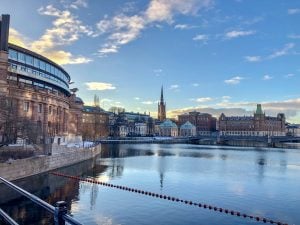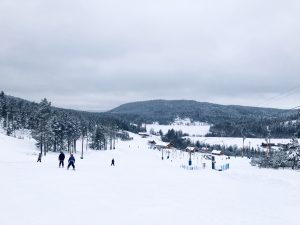[fusion_builder_container hundred_percent=”no” equal_height_columns=”no” menu_anchor=”” hide_on_mobile=”small-visibility,medium-visibility,large-visibility” class=”” id=”” background_color=”” background_image=”” background_position=”center center” background_repeat=”no-repeat” fade=”no” background_parallax=”none” parallax_speed=”0.3″ video_mp4=”” video_webm=”” video_ogv=”” video_url=”” video_aspect_ratio=”16:9″ video_loop=”yes” video_mute=”yes” overlay_color=”” overlay_opacity=”0.5″ video_preview_image=”” border_size=”” border_color=”” border_style=”solid” padding_top=”” padding_bottom=”” padding_left=”” padding_right=””][fusion_builder_row][fusion_builder_column type=”1_1″ layout=”1_1″ background_position=”left top” background_color=”” border_size=”” border_color=”” border_style=”solid” border_position=”all” spacing=”yes” background_image=”” background_repeat=”no-repeat” padding=”” margin_top=”0px” margin_bottom=”0px” class=”” id=”” animation_type=”” animation_speed=”0.3″ animation_direction=”left” hide_on_mobile=”small-visibility,medium-visibility,large-visibility” center_content=”no” last=”no” min_height=”” hover_type=”none” link=””][fusion_text] During the final year of my biomedical science degree at IMU, I undertook an internship for a total of 9 weeks in Sweden. I was stationed at the Uppsala Biomedical Centre [Biomedicinskt Centrum (BMC)] which is one of the many campuses under the principal institution, Uppsala University. Uppsala Biomedical Centre is one of the Europe’s largest centres for life sciences, with research and education in biology, pharmacy, chemistry, medicine and dietetics. [/fusion_text][fusion_imageframe image_id=”36643″ style_type=”none” stylecolor=”” hover_type=”none” bordersize=”14″ bordercolor=”#ffffff” borderradius=”” align=”none” lightbox=”no” gallery_id=”” lightbox_image=”” alt=”” link=”” linktarget=”_self” hide_on_mobile=”small-visibility,medium-visibility,large-visibility” class=”” id=”” animation_type=”” animation_direction=”left” animation_speed=”0.3″ animation_offset=””]https://www.imu.edu.my/media/2019/08/Hari-2.jpeg[/fusion_imageframe][fusion_text] At the BMC, I was attached to the Department of Cell and Molecular Biology. My on-site supervisor was Prof Stefan Knight who is also the programme leader for the Structural Biology programme. Besides, I worked alongside a postdoctoral researcher in the Analytical Chemistry programme to gain an insight in the Department of Chemistry.  I was trained in an on-going research in the Structural Biology programme. Initially, the gene of interest was cloned so that the expression of the protein will have high yield of pure protein for experimental work. The protein purification was done using a fast protein liquid chromatography (ÄKTA protein purification system). The protein of interest was immobilised using metal affinity chromatography (IMAC), followed by size exclusion chromatography and ion-exchange chromatography to further purify the protein. The quality control was performed using SDS-Page, western blotting, and dynamic light scattering (DLS) for protein analysis. In short, the main goal of the on-going research in the Structural Biology programme is to obtain 3-D structures of proteins and elucidate its function which is at its atomic resolution. The 3-D structures provide a deeper understanding of protein function and help to unravel their molecular dynamics of the living cell. The structure of the proteins can be visualised by cryo-EM method and X-Ray crystallography to obtain the 3-D molecular structure of proteins.
I was trained in an on-going research in the Structural Biology programme. Initially, the gene of interest was cloned so that the expression of the protein will have high yield of pure protein for experimental work. The protein purification was done using a fast protein liquid chromatography (ÄKTA protein purification system). The protein of interest was immobilised using metal affinity chromatography (IMAC), followed by size exclusion chromatography and ion-exchange chromatography to further purify the protein. The quality control was performed using SDS-Page, western blotting, and dynamic light scattering (DLS) for protein analysis. In short, the main goal of the on-going research in the Structural Biology programme is to obtain 3-D structures of proteins and elucidate its function which is at its atomic resolution. The 3-D structures provide a deeper understanding of protein function and help to unravel their molecular dynamics of the living cell. The structure of the proteins can be visualised by cryo-EM method and X-Ray crystallography to obtain the 3-D molecular structure of proteins.
In the Department of Chemistry, I prepared and analysed various biological samples such as plasma and urine samples for GABA, brain tissue samples from Alzheimer patients for FFA and plasma samples for nicotine analysis. Different separations methods coupled with analysis by mass spectrometry were used. I learnt how to perform HPLC-MS, UPLC-MS, SFC-MS and consequently analysed the results.
My internship in Sweden had also given me the opportunity to work with people from various parts of the world. Overall, my internship in Sweden was very fruitful and has given me a good experience on what is it like to work in a research laboratory. I was also given the opportunity to operate some complex instruments used for higher levels of research. The internship also improved my technical and communication skills. Besides, I got the opportunity to witness a public thesis defence of a doctoral student.
The hardest and challenging part of my internship would be adapting to the limited daylight and cold as the temperature was constantly below zero temperature. The coldest when I was there was just below -20 Celsius. There is nothing much in Uppsala itself, but I travelled to a few places in Sweden. I visited Stockholm, Sigtuna and a ski resort up north in Järvsö where I spent a week there.
Besides, I went on a 6-hour scenic train ride to Oslo, Norway. Before flying home, I flew to London and spent a few days there. I visited London to watch a football match and went on a stadium tour of my favourite football club, Chelsea. My internship in Sweden allowed me to visit some amazing places and I never expected taking such a huge leap out of my comfort zone would have had such a positive impact on my life.
Article and photos by Harinash Rao A/L Precasa Roe (BM1/16) [/fusion_text][/fusion_builder_column][/fusion_builder_row][/fusion_builder_container]


